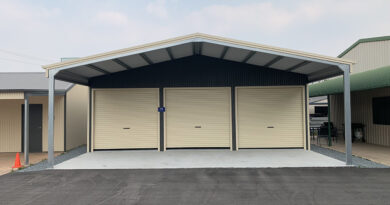Triangle Modern Architecture in North Carolina
North Carolina’s Triangle area is a progressive space that includes Durham, Chapel Hill, and Raleigh—the state’s largest cities, and smaller communities in between. The history of the idea began in 1959 when Governor Luther Hodges united three major research universities into a single Research Triangle Park.
The high pace of development of the region gave impetus to the formation of a competitive business ecosystem in various industries. The biggest achievements affected the industrial, financial, and pharmaceutical sectors. However, even more significant changes were applied to architecture.
The Triangle Region urban planning concept consists of multiple modern solutions. This applies to both civil and industrial engineering. The surrounding area offers a whole range of unique structures that you would love to explore.
Yes, it would be a great idea to pick up the RDU Airport van rental and go on an architectural trip with friends. Rental24h.com provides a large selection of North Carolina van rental deals to suit your travel needs. However, what places to visit? Let’s look at the most striking examples of sustainable architecture in the Triangle Region and analyze the features of contemporary engineering trends.
What are the main features of modern architecture?
Naturally, modernist engineering solutions differ from what the architects of the past preached. Their distinctive features are:
- Uniqueness. When creating a project, each architect adds some kind of twist that makes the building original and innovative.
- Practicality. Contemporary architectural trends strive to give buildings functionality. After all, the rhythm of modern man requires maximum saving of time and efficiency.
- Linearity. In modern buildings, you rarely find perfectly straight lines. Engineers prefer curved lines and sometimes spherical or ellipsoidal shapes.
- Materials. The use of metal elements, wood, and glass is traditional.
- Large windows. The prerogative of modern buildings is a large amount of natural lighting, which forces the use of panoramic windows everywhere.

Modern Triangle Region architecture – the most striking examples
From huge arenas to houses tucked away near Raleigh, North Carolina offers a wide range of modern-style buildings. Take a look at the most mind-blowing projects brought to life below.
J.S. Dorton Arena
You can describe this building in many words, but the most appropriate one is “revolutionary”. Yes, Matthew Nowicki created something more than an arena – it was rather an architectural breakthrough. Externally, the structure looks like two parabolic concrete arches that support the roof. In turn, the roof consists of a network of prestressed cables. At a height of about 25 feet, the planes of the arches intersect and then shoot upward to almost 90 feet above the ground. In order to ensure the necessary rigidity of the structure, the arches begin underground.
One more feature of the building is the huge span between the walls. However, the designers took an innovative approach to covering such a large space. They pulled almost 100 cables, creating the skeleton of the future roof. As a result, gravity made it possible to obtain a unique curved surface, which was the first in the world with such a complex design.
The engineers used a steel frame filled with glazing as the wall material. This made it possible to obtain much-missed natural lighting in the room. As a result, now the arena is a huge space suitable for organizing fairs and various grand events under one roof.

Henry L. Kamphoefner House
The greatest uniqueness of this building is that it’s the first of its kind in the region. Henry L. Kamphoefner was then dean of N.C. State’s College of Design and asked professors to create a modernist house. As a result, they designed a cutting-edge building with an innovative approach.
The central brick chimney became the dominant structural element around which the house was built. Other key features include a flat roof, open-plan space, and a harmonious interaction between interior and exterior.
Yes, the bedrooms in the backyard have convenient access to the terrace through panoramic doors. At the same time, the walls at the front of the house are brick to give the owners more privacy. In general, you can see large glazed areas around, which is typical of modern design. Clerestory natural ventilation complements the list of engineering solutions used in the building. Although built a long time ago, the Henry L. Kamphoefner House serves as an excellent example of the emergence of modern North Carolina architecture.
James B. Hunt Jr. Library
The unique five-story building opens a window into the world of innovative architectural designs. Its first charm is its shape – it looks like a bent rectangle with concrete columns serving as the base. At the same time, the steel frame with glass fills the space between, bringing the necessary amount of natural light into the interior.
The main idea of the library is to save internal space and make it user-friendly. Therefore, the building uses an automated book delivery system, which allows each floor to be used more efficiently. At the same time, open staircases highlight the interactive and social environment and make the interior even more progressive.
One more unique feature of the building is the aluminum façade panels. They prevent the internal air from overheating in hot weather and thereby facilitate air conditioning. By the way, both cooling and heating are provided by radiant panels and active chilled beams.

Cassilhaus
Hiding in the woods between Chapel Hill and Durham, Cassilhaus offers ample space for development and inspiration. Its main concept is asymmetry represented by three trapezoidal interconnected spaces. While two of the capsules are living spaces, the third serves as a meeting place for designers and artists.
Typical of modern design, panoramic windows bring plenty of light inside. At the same time, the large difference in heights on the territory made it possible to organize a basement for utility rooms. The flat roof also aims to provide the greatest practicality and efficiency. It has slopes that take into account the position of the sun at different times of the day, which increases the flow of light into the house.
Those who love outdoor terraces will appreciate the design of Cassilhaus as well. Once outside you get fantastic views of New Hope Creek and Duke Forest.
So, the future of architecture in the Triangle Region is in good hands. Home to three universities specializing in design, the area has no shortage of qualified engineers. This means we will see the birth of multiple architectural masterpieces in this century. Of course, the triangle has dozens of other beautiful designs. Among them are RDU Airport Terminal 2, Bechtler Museum of Modern Art, Rantilla House in Raleigh, and the North Carolina Museum of Art. Come see all these pearls with your own eyes!




